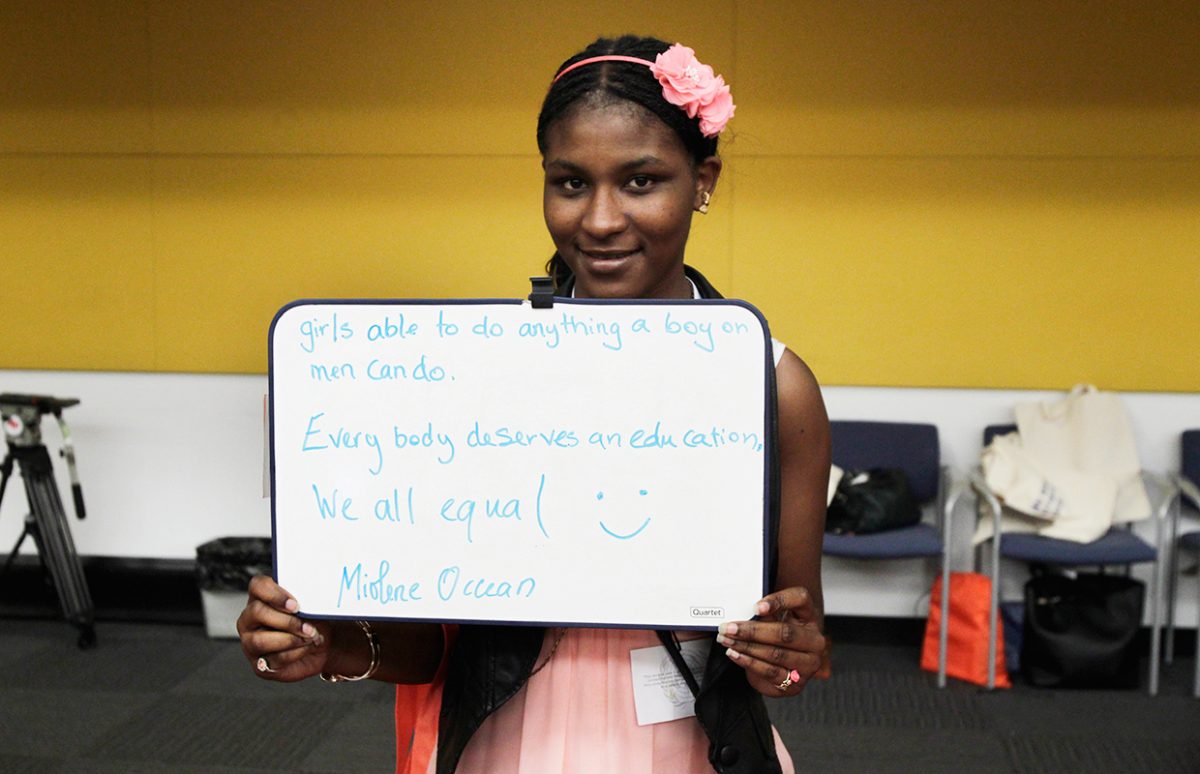In 2011, the United Nations declared 11 October the International Day of the Girl. It's a day to celebrate girls and raise awareness of the problems they face. The UN, Plan International and USAID all have excellent resources for working on gender equality and education in class. Many of these topics would work well as part of an EPI with Geography or EMC.
This photo story, "Today's Girls Tomorrow's Future", about the benefits of girls' education from USAID is positive and for the most part very simple. It focuses on a girls' school in the Palestinian West Bank. First four slides are simple enough to use from A1+. The fifth one is B1-level, so you could skip it with lower-level classes. The rest of the slides are possible with help from A2. (You'll probably need to clarify the American "gotten" instead of got.) Slide 6 is particularly good for classwork as it presents two specific pupils. As it says, "These numbers have names, faces and dreams." Personalising always makes it easier for pupils to identify and learn.
The slideshow finishes on a video with stars pupils will recognise like Anne Hathaway, Alicia Keys, Julie Delpy, Kelly Osborne Chris Colfer or Susan Sarandon. It's usable from B1 if pupils have followed the slideshow (it recaps much of the same information but starts with some more difficult, and very touching examples.

There is an A1+ audio recording with interactive comprehension activities of an empowering story for girls in the Banque de ressources anglais cycle 4:
Audios > A1+ > Rencontres avec d'autres cultures > "Maha of the Mountains" Queen Rania of Jordan wrote this story for World Book Day to encourage girls' education.
To see the resource, register now or log in.
Count the Girls
The theme for this year's International Day of the Girl is Girls' Progress = Goals' Progress: What Counts for Girls. The charity Plan International is is raising awareness of the need to have accurate statistics about girls' and womens' lives if we are to measure whether international efforts improve them.
This video, "Invisible girls" is an introduction to the problem. The language isn't difficult, although the concept is a little abstract. A2+-level pupils should be able to get the gist if you have already introduced the topic.
And this is again a concrete example, of Melissa from Zimbabwe. It's subtitled in English, as she is speaking her native language, so it is more a reading comprehension activity. The vocabulary around education, such as "dropping out" makes it more suitable for B1+ and above.
Collecting Statistics: Class Project
See also this project from the United Nations to collect statistics about the representation of women both at a national level (political leaders) but also down to their own level (their headteacher, doctor, parents' bosses, sports coach, etc.)
Child Marriage
Again from B1+, this heart-warming story of a 13-year-old Bangladeshi girl who managed to save her friend from a child marriage. Pupils can read starting at the third paragraph.
> Collecting Statistics: Class Project on Gender Equality
Tag(s) : "BRNE Cycle 4" "child marriage" "development goals" "gender equality" "girls' education" "Give Me Five 4e" "international day of the girl" "statistics" "united nations" "video"





